The Role Of The Buffer Tank
Frequent Start and Stop
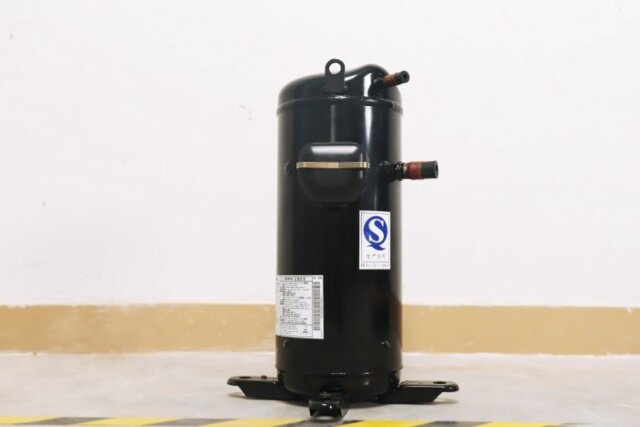
If the buffer tank is not used, the compressor will start and stop frequently. Because of the limited amount of water in the circulation circuit, the water temperature will reach the target temperature we set in a very short period of time, at which point the compressor will stop working. Then in a very short time, the water temperature will rise again to the temperature that will trigger the compressor to start. This frequent starting and stopping will greatly reduce the life of the compressor and waste a lot of electricity. So we not only need a buffer tank but also the capacity of the water tank is better to be larger.
Smooth Flow of Water
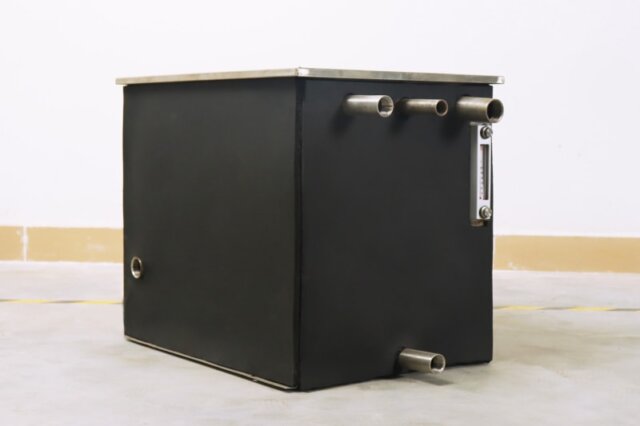
It can ensure the smooth flow of water in the system and complete the automatic exhaust to avoid the unit from reporting malfunction. When the tank is installed in the circulation system, the circulating water enters from the upper part of the tank and discharges from the lower part, so that the gas in the water will accumulate in the internal space, and then the pressure in the system will automatically discharge the gas from the upper exhaust valve of the tank. In this way, not only can the system be free of gas, but also can protect the impeller of the pump from being damaged by air bubbles and ensure the normal operation of the compressor. If there is no buffer tank, then there might be the risk of malfunction in the flow switch.
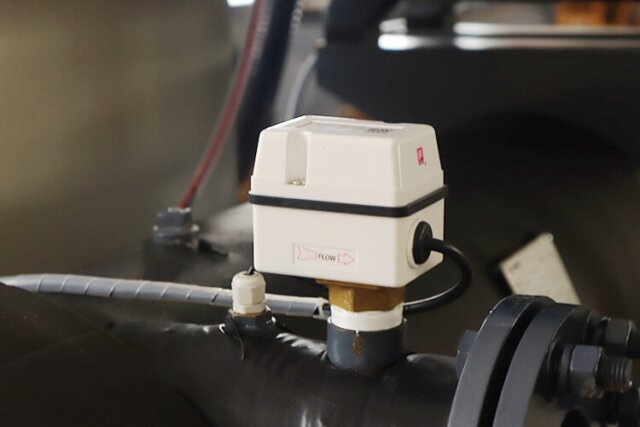
Prevent Clogging
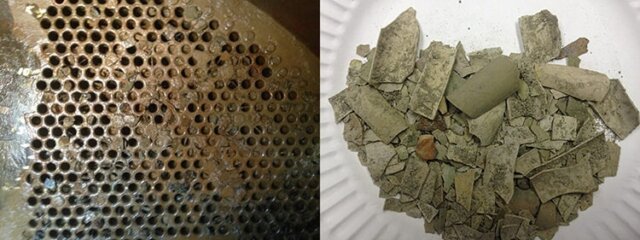
It can make the system’s drainage more thorough and prevent the system from clogging. The water source used in the chiller may have a large number of impurities, which will slowly accumulate in the bottom of the buffer tank through circulation. This prevents a large number of impurities from adhering to the internal piping of the chiller and causing abnormalities in the cooling.
Buffer Tank Selection
Insulation Layer
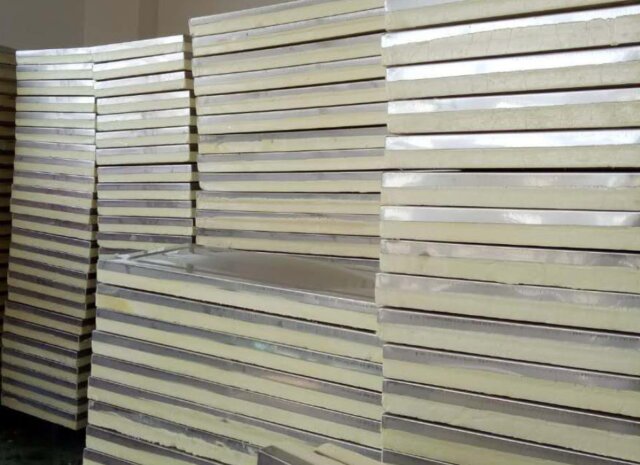
The good or bad insulation effect of the water tank is affected by the thickness and coverage of the insulation layer. The thicker the insulation layer, the wider the coverage, the better the insulation effect. In the warmer winter places recommended tank insulation layer thickness is 40 ~ 50 mm, in the colder winter areas, the recommended tank insulation layer thickness is 80 ~ 100 mm. In addition, the insulation effect of the insulation layer in addition to the thickness, but also with the density of polyester foam has a relationship, the more solid density, the better the insulation effect, and vice versa, if the foam is not uniform will affect the insulation effect.
Openning Location
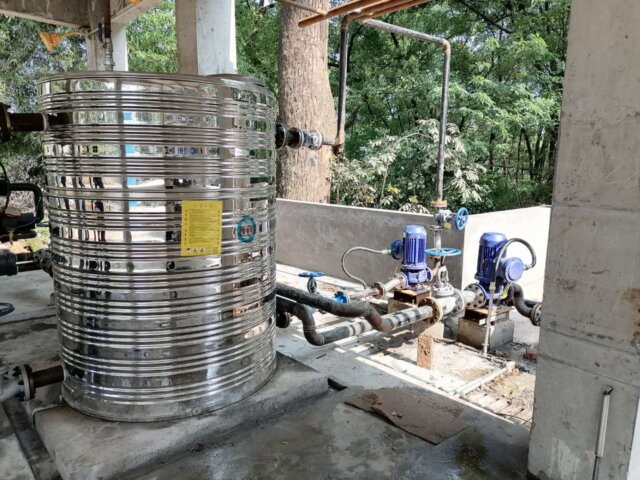
The location of the opening of the water tank should also be noted. The outlet is about 30CM from the bottom, the system will be running at the bottom of the tank corrosion, impurities and scale precipitation to the bottom, if the opening position is too low when pumping water-sediment will be sucked to the pump filter. In addition, the pressure at the bottom of the tank is larger, which will increase the load of the pump. The return port is best 20CM away from the top, sometimes the return flow is relatively large, which can prevent the water from overflowing or splashing out. Of course, here refers to the non-pressurized tank, it doesn’t matter if we choose a pressure tank, but there must be an exhaust valve, the location of the temperature sensor probe is best at 2/3 position from the bottom because the hot water is generally on top, the measurement at this position will be more reliable.
Firm Foundation
The bottom of the water tank must be firm. The bottom of the tank should have an insulation layer, and there should have steel support on both sides to prevent the bottom insulation layer from deforming due to the gravity of water when the tank is fully loaded with water.

Can someone contact me Monday April 25th to discuss our need for a buffer tank and, along with size
Johnny at John Ciampoli Plumbing (619) 972-8042
Buenas tardes, mi pregunta es la siguiente:
Con que norma o código diseño un tanque de compensación?
En el caso que el P&ID me de valores de presión de entrada de 1 PSI y 20°C de temperatura
En mi proyecto tengo un chiller de 10 tr conectado con un fan coil de 10tr que estará ubicado a 5 mts. sobre el chiller, debo instalar un tanque de inercia, que por razones de costo instalare un tanque de 200 litros construido en fibra de vidrio, es decir que no será un tanque presurizado,. Pregunto, a que nivel debo instalar el tanque para que cuando pare el sistema no se desborde el tanque por la diferencia de altura.
Para asegurar que tu tanque de inercia no se desborde cuando el sistema esté apagado, debes considerar varios factores clave en el diseño del sistema de refrigeración y la instalación del tanque de inercia. Aquí te dejo una guía detallada para ayudarte a determinar el nivel adecuado para la instalación del tanque:
Altura de instalación del tanque de inercia:
El tanque de inercia debe instalarse a una altura que permita que la presión estática del sistema sea manejable. Dado que tu fan coil está ubicado a 5 metros sobre el chiller, es importante asegurarse de que el tanque se instale a una altura intermedia que permita equilibrar las presiones.
Para evitar que el tanque se desborde, idealmente deberías instalar el tanque a la misma altura que el chiller o ligeramente por encima, pero siempre por debajo del nivel del fan coil. Esto minimizará la diferencia de presión que podría causar el desbordamiento.
Presión estática y dinámica:
Considera la presión estática causada por la altura del agua en el sistema. Cada metro de altura de agua corresponde aproximadamente a 0.1 bar (1.45 psi) de presión.
Si el fan coil está a 5 metros de altura, eso representa una presión adicional de aproximadamente 0.5 bar en el sistema.
Conexiones y válvulas:
Asegúrate de tener válvulas de cierre y posiblemente una válvula de retención en las líneas de agua para evitar el flujo de retorno que podría causar el desbordamiento.
Instalar un tanque de expansión abierto puede ayudar a absorber los cambios de volumen de agua debido a las variaciones de temperatura y presión, lo cual es esencial en sistemas no presurizados.
Desbordamiento y drenaje:
Diseña un sistema de desbordamiento adecuado para el tanque de inercia. Un desagüe de seguridad ayudará a evitar que el tanque se desborde en caso de sobrellenado.
La tubería de drenaje debe ser suficiente para manejar el volumen de agua que podría fluir hacia el tanque cuando el sistema esté apagado.
Ubicación y soporte del tanque:
El tanque debe estar firmemente apoyado y asegurado para evitar cualquier movimiento o inclinación que podría contribuir a un desbordamiento.
Asegúrate de que la instalación del tanque permita un acceso fácil para el mantenimiento y la inspección.